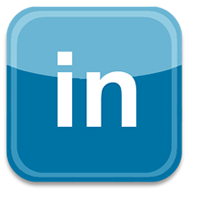The Green Sheet Online Edition
May 5, 2009 • 09:05:02
Street SmartsSM
Developing your elevator speech
The term "elevator speech" refers to a pitch made within the time span of a typical elevator ride - one wrapped up before you, or the person you're talking to, gets out. An elevator speech is a brief overview of your product, service or, if you are looking for a job, yourself. It is between 90 and 120 words, dished out in 30 seconds or less.
Besides your business card, there is nothing more important than the elevator speech. It is clean and crisp, focuses on one topic and ends with a call to action. It sounds easy, and most business owners think they have a great 30-second elevator speech. But, truly, most fall flat.
Jeff Klein, of Klein Creative (www.kleincreative.tv), is a friend of ours and a fellow speaker. Jeff's forte is helping people develop 30-second elevator speeches. He has helped us learn and understand many of the art's finer points.
A second friend, who is also a speaker and a Senior Columnist at the Fort Worth Star-Telegram, is Dave Lieber (www.yankeecowboy.com). As we were developing our elevator speeches, we had an "ah-ha" moment.
Dave's writing and speaking style revolves around his proven personal philosophy that all people love stories. Dave told me over and over again, "If you want to be a good speaker and a good writer, learn to tell stories. Everybody loves stories, and stories are the bridge to human connections."
In this article, we will go through the steps of creating, refining and practicing your elevator speech in the form of a story, designed for a specific group of people, with a precise call to action.
Creating the foundation
The foundation of an elevator speech is on paper, not in your head. Start out with a pad of paper, not a word processor. There's magic to paper and pen. It has you feel the words as the pen is writing. Paper makes writing easy to scratch out, make adjustments or scribble thoughts you want stored for later use.
On a sheet of paper, jot down those times you have been a superhero to your customers. Maybe you had a merchant with a terminal down and had it replaced that same day, programmed and ready to go.
Perhaps a customer was nonqualifying many transactions, and you helped the individual understand the transactions and spent time showing your customer how to get those transactions into a qualified category.
Our goal now is to gather three to five of these success stories for our elevator speech foundation.
As Lieber says in his book, The High Impact Writer:
-
Stories must have a beginning, middle and an end. Stories must have lead characters, a hero and a villain - also called a protagonist and an antagonist. The villain doesn't have to be a person. A villain can be a trend, a building, a form of pollution, an illness, anything of consequence that entangles the hero in some kind of ugly mess that he or she must fight.
There must be a plot in which this conflict is played out, with each scene in the story building on the past and leading to the future - the dramatic action that propels the story forward toward the climax and resolution.
One story
Here's one of our sample stories.
-
Approximately three years ago, at 7:30 one morning, I dropped off our clothes at this cleaner. There was a sea of dry cleaning bags that were an impromptu obstacle course. I asked the owner how long this had been going on. He shouted, "Three days! I need help."
I asked him what happened.
He replied, "Our computer system crashed." This dry cleaner used software to process his transactions. "I called my processor for help, but they referred me to the software company since their help desk only supported terminals," he said. "Then I called the software company and they said I needed to rebuild his server first."
No, the software company couldn't help him with his credit card processing in the meantime. He'd need to call his processor for that.
I had appointments scheduled that day. Seeing his frustration and misery, I offered to help him rebuild his server. He was deeply grateful as I cleared my calendar for that day.
He required the credit card processing software, his dry cleaning tracking software, reinstallation of all drivers to support his printers and scanner, and the mapping of network drives. Finally, at 9 p.m. he was fully operational, with all four stations and his server humming along smoothly.
For a merchant, losing one day of credit card processing can be a nightmare. Having almost four days without processing has an adverse affect to a company's top line, as well as the ability to pay vendors and employees.
Certainly other ISOs could have helped the dry cleaner mentioned in the story. But none were available that day or the previous three days. We differentiated ourselves by showing a sense of urgency to assist the merchant. We had the technical expertise to rebuild a server, as well as create the network paths and security protocols for the merchant's local area network.
Lastly, we spent as much time as required, ensuring the merchant was up and running before we left. Boiling down the differentiators in this story, we have the following sample adjectives or descriptors:
- Sense of urgency
- Technical acumen
- Fluid and flexible service
- Commitment and perseverance
After you have three to five of these stories outlined, look for how you differentiated yourself from the competition. Find your adjectives or descriptors. Try to keep away from platitudes like the lowest price, great service or other trite comments that don't build a picture. Remember, you are creating a story.
Word crunching
In a networking environment, it is difficult enough to remember the names of the people in attendance, let alone what they do, what they are looking for and what represents - for them - a good lead. Our goal at a networking event, even if it is our first time in attendance, is to be memorable. Tomorrow, people may not remember our names or our business, but they will remember our story.
Pick out a business, association or group of professionals to target, and ask yourself before attending an event, "Are these target customers the type of people this networking event would draw?" If the answer is yes, then you're almost there.
Take the three to five stories you created and type them into a word processor. Ensure you have a hero (our company in the above story), villain (the cleaner's current processor and software company), a plot (from a sea of dry cleaning bags to mapping of network hard drives) and finally the climax and resolution (he was up and running by 9 p.m.).
In your word processor, break the story apart, ensuring the components of hero, villain, plot and resolution are all clearly present. Under the story, summarize your adjectives and descriptors. Do this for each story you write.
Also, Jeff Klein taught us to purge mention of selling to "anybody," "someone" and "you" from your elevator speeches. Be clear, distinct and unambiguous.
Putting it together
The three components we bring together are your target customer, the story and finally the call to action. They must be done in that order. Nothing follows the call to action.
Here's how it works. Imagine you are at a networking event. Approximately 30 people are present. They take turns telling people how great their widgets are and asking that "you" or "anybody" or "someone" should see them first before buying widgets. Oh, they have blue widgets, green widgets, small widgets and large widgets. The price of their widgets is the lowest anywhere. They'll beat any competitor. Sound familiar?
That's how not to do it. Here's an example of an effective 149 word elevator speech:
Identify your target customer
Good afternoon. My name is Jon Perry from Merchant Services. Today, I'm looking for dry cleaners.
The story
One of my customers, a dry cleaner, had his server crash. He had been without credit card processing for three days. Neither his processor nor his software company could help him without the server being rebuilt first. He didn't know where to turn. Although he wasn't my customer at the time, I cleared my calendar and spent the next 14 hours rebuilding his server, mapping network drives and installing his critical software.
Call to action
Dry cleaners work hard. Their job isn't to understand merchant services; it is only to know who to call if a problem occurs. If you know a dry cleaner that can use this level of service with competitive rates, please write the dry cleaner's name on the back of your business card, and give it to me at the end of this networking event.
Edit on the fly
In a networking environment, if someone introduces us by name and company, then we remove our personal introduction. It's not only redundant to leave the intro in, but more importantly, it takes away valuable time from your 30 seconds. With some basic editing, we are able to reduce the 149 words to 97 words. If we work harder, we can shave a few more. It all depends on what you can safely deliver in 30 seconds. Here's the edit.
Identify your target customer
Today, I'm looking for dry cleaners.
The story
My dry cleaner had his server crash. He had been without credit card processing for three days. He didn't know where to turn. Although he wasn't my customer at the time, I spent the next 14 hours rebuilding his server, mapping network drives and installing his critical software.
Call to action
Dry cleaners work hard. When problems occur, they need a reliable company to call. If you know a dry cleaner, please write their name on the back of your business card and give it to me at the end of this networking event.
Notice that when asking for dry cleaners, we don't use the terms "you," "anyone" or "somebody." We have trouble getting our arms around those generalities. We know so many people, it's difficult for our brains to immediately isolate who "you," "anyone" or "somebody" might be.
But when we start small, such as a dry cleaner, people think, "Can they do it for an attorney's office? Or a dental office? Or for a convenience store?" We have asked for a specific type of business and allowed the recipient to transform it to the general. If we were to attend another networking event the following week, we might ask for hair salons and use a different story.
Warm, not cold
Also notice we asked attendees to write dry cleaners' names on the back of their business cards. Why? Because when we get back to the office, we will send e-mail messages to the people who gave us cards, thanking them for the referrals from the networking event. Furthermore, we will copy into the e-mail our 97-word elevator speech and ask them to forward the message to the dry cleaners, copying us on the e-mail.
When we call on the dry cleaner, either in person or over the phone, we are not strangers. We've had one of their customers, a family member or business associate connect us with them. It turns a cold call into a wonderfully warm one.
Remember, people love stories, and they remember them. Develop your stories first. Ensure they have a beginning, middle and an end, with a hero and a villain. From your stories, extract differentiators in the form of adjectives and descriptors. Edit your story down to 90 to 120 words. Memorize your stories and have them verbally flow with dramatic flair. Say absolutely nothing else after your call to action.
We want to know if this article helps you in your business. Please post to us (Street Smarts) on GS Online's MLS Forum at www.greensheet.com.

Jon Perry and Vanessa Lang are the owners of 888QuikRate.com, an ISO based in Ft. Worth, Texas, that was named Small Business of the Year by the local newspaper, The Star Telegram. For more information, tweet them at http://twitter.com/dfwcard, comment on their blog at http://merchantservices.cc or visit their profile at http://linkedin.com/in/jonperry or http://linkedin.com/in/vanessalang. Alternatively, you can contact Jon and Vanessa by phone at 817-857-3557 or by e-mail at jon.perry@888quikrate.com or vanessa.lang@888quikrate.com.
Whether you want to upgrade your POS offerings, find a payment gateway partner, bone up on fintech regs or PCI requirements, find an upcoming trade show, read about faster payments, or discover the latest innovations in merchant acquiring, The Green Sheet is the resource for you. Since 1983, we've helped empower and connect payments professionals, starting with the merchant level salespeople who bring tailored payment acceptance and digital commerce tools, along with a host of other business services to merchants across the globe. The Green Sheet Inc. is also a proud affiliate of Bankcard Life, a premier community that provides industry-leading training and resources for payment professionals.
Notice to readers: These are archived articles. Contact information, links and other details may be out of date. We regret any inconvenience.





